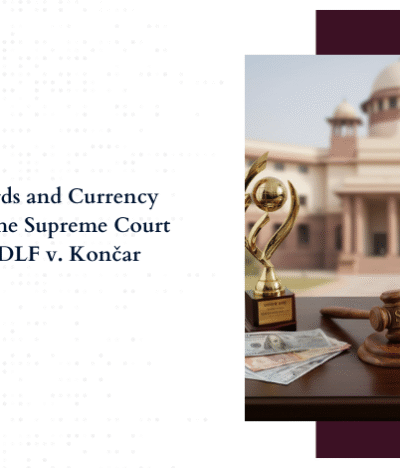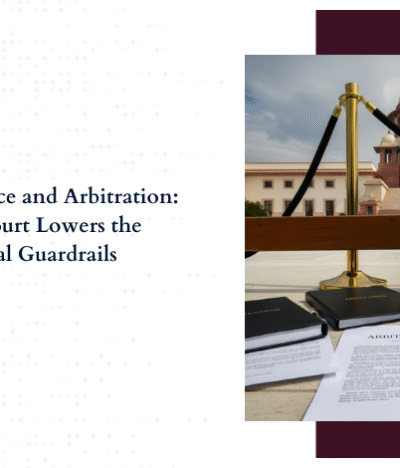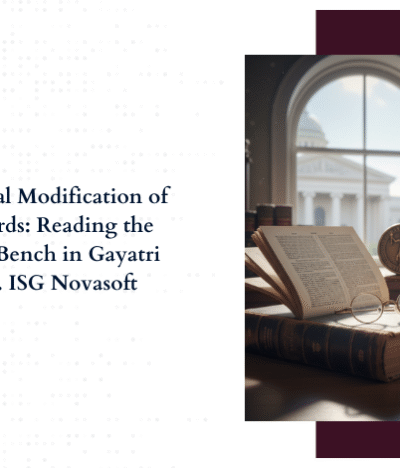When a corporate entity issues or receives a cheque, the law does not treat it as an empty piece of paper. The Negotiable Instruments Act, 1881 (“NI Act”) arms the holder of a cheque with statutory presumptions under Section 118 and Section 139. These presumptions allow courts to assume, unless proven otherwise, that the cheque was issued towards a legally enforceable debt or liability. For corporate complainants in Delhi—who frequently engage in high-value commercial transactions—these provisions are the backbone of cheque bounce litigation under Section 138 of the NI Act.
But presumptions do not mean an automatic conviction or recovery. They shift the burden of proof: the complainant must show compliance with statutory requirements, while the accused may rebut by raising probable defence. In practice, corporates must know not only how to invoke these presumptions but also how to sustain them when the accused challenges the existence of a legally enforceable debt cheque.
Statutory Presumptions: Section 118 and Section 139 NI Act
Section 118 of the NI Act lays down a set of presumptions in favour of negotiable instruments, including cheques. Once execution of the cheque is admitted, the law presumes:
- that it was made or drawn for consideration;
- that it was accepted, endorsed, or transferred for consideration;
- and that every holder of the cheque is a holder in due course.
Section 139 goes a step further. It specifically provides that the court shall presume that the cheque was issued for the discharge, in whole or in part, of a legally enforceable debt or liability. The language here is mandatory—courts do not have discretion to deny the presumption once issuance of the cheque is established.
For corporate complainants in Delhi, this dual presumption is powerful. The law essentially places the initial burden on the accused. Once the company proves that the cheque was drawn on the account of the accused and dishonoured, the legal presumption is that the cheque represents a subsisting liability. It is then for the drawer company, or its directors, to prove otherwise.
The Supreme Court in Rangappa v. Sri Mohan (2010) clarified that the presumption under Section 139 is not just of issuance but extends to the existence of a legally enforceable debt cheque. However, the presumption is rebuttable, and the accused can discharge this burden by raising a probable defence on the balance of probabilities—not beyond a reasonable doubt.
Delhi trial courts and the Delhi High Court have consistently applied this principle. The complainant company need not produce exhaustive evidence of each underlying transaction at the very outset. Establishing the cheque, its dishonour, and statutory compliance under Section 138 is sufficient to activate the presumption in its favour.
How Corporates Prove a Legally Enforceable Debt
For a company, relying solely on statutory presumptions is never enough. Courts expect corporates to present coherent evidence that ties the cheque to genuine commercial dealings. In Delhi, where cheque bounce litigation often involves large-scale supply contracts, loan arrangements, or inter-corporate deposits, the complainant’s credibility is tested on documentary consistency.
Key ways corporates strengthen their case:
1.Board Resolution or Authorisation
A corporate complainant must establish that the complaint is filed by a duly authorised representative. Delhi courts insist on proper board resolution or power of attorney in favour of the signatory, ensuring that the complaint is not dismissed on technical grounds.
2. Linking Cheque with Underlying Transaction
Companies often file invoices, purchase orders, delivery challans, or loan agreements to demonstrate the debt. These documents bridge the gap between the statutory presumption and the underlying liability.
3. Books of Accounts and Ledger Entries
Well-maintained books, balance confirmations, and auditor-certified statements often carry significant evidentiary weight. In commercial disputes, such records help establish that the cheque corresponds to an admitted transaction.
4. Communication Trail
Emails, minutes of meetings, and correspondence acknowledging the debt add persuasive strength. Courts in Delhi have increasingly relied on electronic records under the Evidence Act to reinforce the presumption of a legally enforceable debt cheque.
5. Prompt Statutory Compliance
The company must issue a demand notice within the statutory 30-day period and file the complaint within limitation period. Procedural diligence signals to the court that the claim is bona fide.
Common Rebuttals by Accused and How Corporates Defend
Once the presumption under Section 139 is triggered, the accused company or its directors will almost always attempt to rebut it. Delhi courts recognise several defences that can weaken or negate the presumption. However, each has a corresponding strategy for the complainant corporate to counter.
- Defence: “No legally enforceable debt”
- Accused may argue that the cheque was issued as security or for a proposed transaction that never materialised.
- Corporate Response: Produce contemporaneous records—like delivery receipts, service contracts, or loan disbursal proofs—that establish that money or goods actually changed hands.
- Defence: “Blank or Misused Cheque”
- It is common for accused to claim that the complainant filled in a blank cheque without authority.
- Corporate Response: Delhi courts have repeatedly held that even a blank signed cheque, voluntarily handed over, attracts presumption. Corporates should show the business context in which the cheque was issued to negate allegations of misuse.
- Defence: “Accounts already settled”
- Accused may produce ledger reconciliations or payment receipts claiming the liability was discharged.
- Corporate Response: Cross-examine such records to expose inconsistencies and present certified books of accounts of the complainant company to show outstanding balance.
- Defence: “Improper Authorisation”
- Directors often challenge that the complaint was filed without proper board resolution.
- Corporate Response: Ensure that the resolution or power of attorney is clear, valid, and produced with the complaint. The Delhi High Court has dismissed several cases only because authorisation was defective.
- Defence: “Cheque not issued by accused”
- Allegations may arise that the cheque was forged or not signed by authorised signatory.
- Corporate Response: Demand handwriting or signature verification; banks’ records and specimen signatures often expose such claims as false.
Delhi courts expect the accused to rebut on the standard of preponderance of probabilities, not proof beyond a reasonable doubt. Still, when corporates are proactive in linking the cheque with real transactions, they make it difficult for the defence to succeed.
FAQs on Presumptions under Section 118 & Section 139 NI Act
Q1. What is the difference between Section 118 and Section 139 of the NI Act?
Section 118 lays down general presumptions about negotiable instruments, including that they are drawn for consideration. Section 139 is specific to cheques—it mandates that the court shall presume that the cheque was issued towards a legally enforceable debt or liability.
Q2. Can a corporate complainant in Delhi rely only on the statutory presumption to win a cheque bounce case?
Not entirely. While the presumption is strong, courts expect corporates to back it with authorisation documents, invoices, books of accounts, or communication trails linking the cheque to the debt. Statutory presumptions make the starting point easier but do not substitute evidence.
Q3. How can an accused rebut the presumption of a legally enforceable debt cheque?
The accused may show that the cheque was issued as security, that the accounts were already settled, or that no actual transaction took place. However, mere denial is not enough; they must present a probable defence with supporting evidence.
Q4. Is a security cheque covered under Section 138 of the NI Act?
Yes, Delhi High Court has held that even a cheque issued as security can attract liability if, at the time of presentation, a legally enforceable debt existed. The key factor is whether the cheque corresponds to an outstanding liability on the date of dishonour.
Q5. What happens if a corporate complainant files a cheque bounce case without proper board resolution or authorisation?
The complaint risks dismissal. Delhi courts treat authorisation as a substantive requirement. To avoid technical objections, corporates must always file through an authorised representative supported by a valid board resolution or power of attorney.
Conclusion
Cheque bounce litigation under Section 138 of the NI Act is not just about presenting a dishonoured instrument; it is about navigating a finely balanced system of presumptions and rebuttals. For corporates in Delhi, Sections 118 and 139 provide a powerful legal foundation by presuming that every cheque represents a legally enforceable debt cheque. Yet, this presumption is not an automatic ticket to recovery. It must be buttressed with proper authorisation, documentary evidence, and meticulous compliance with statutory timelines.
In practice, success lies in preparation: treating every cheque not as a casual instrument but as a legally enforceable commitment backed by records. For corporates, that mindset is the surest way to convert statutory presumptions into actual recovery.






